We wanted to get outside of the city of Paris to see what the surrounding area was like. The city is surrounded by a ring road – a crowded freeway that defines the edge of the central city. We went to three places outside of the ring road, on three different days.
Versailles is at the very end of a subway line, southwest of the city. The palace is huge and impressive, but the lines to get in were long, and we were more interested in seeing the grounds, so we didn’t even try to get inside.
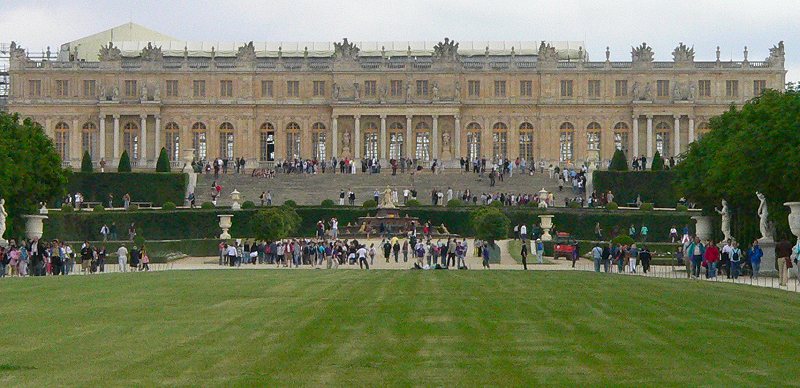
The gardens are very formal – designs made with flowers, statues, smooth green lawns, and clipped, shaped trees.
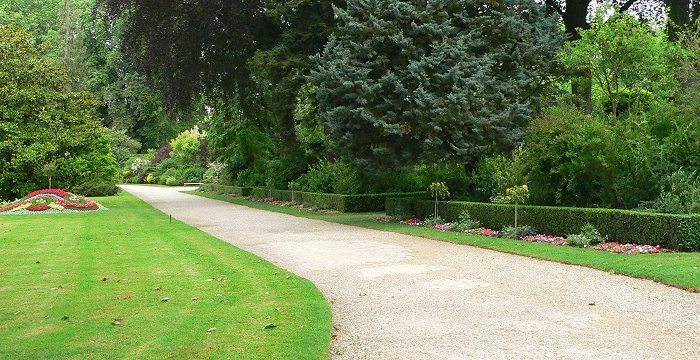

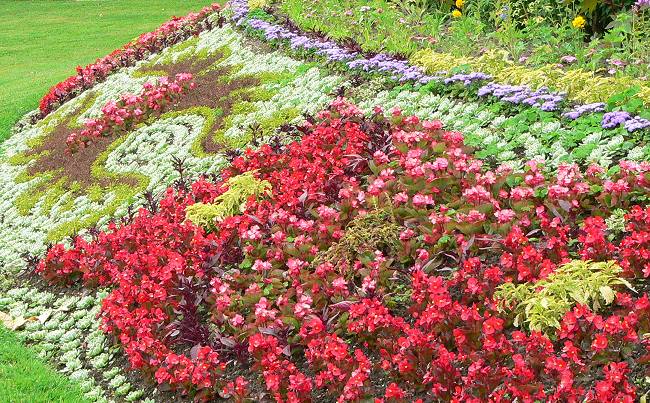
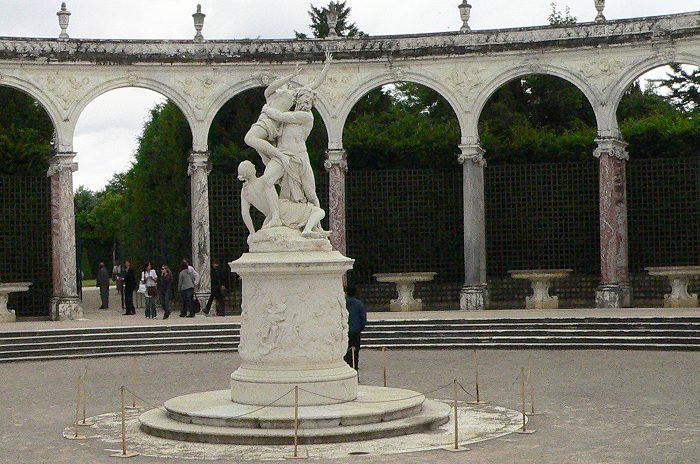
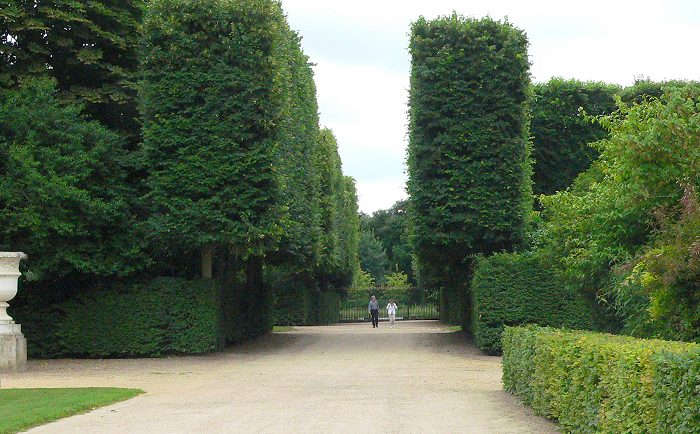

The Apollo Fountain – Apollo is driving his chariot to light the sky – and the Grand Canal.
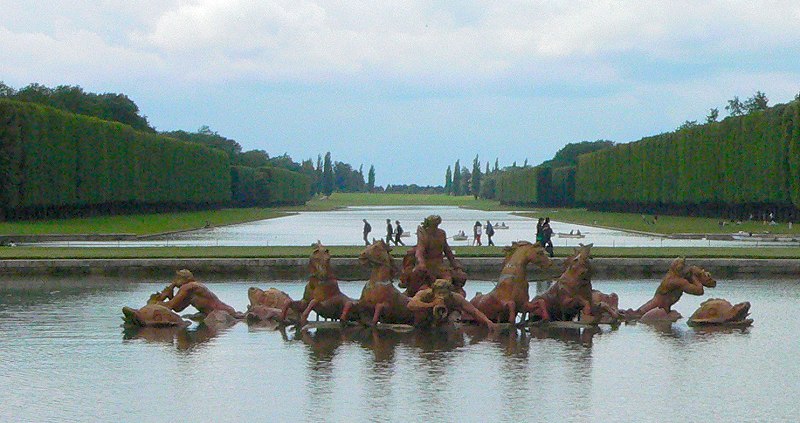
I found a few overgrown lawns and groves of trees – more my style.
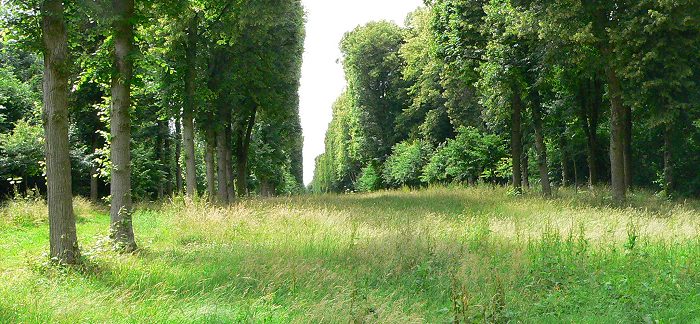
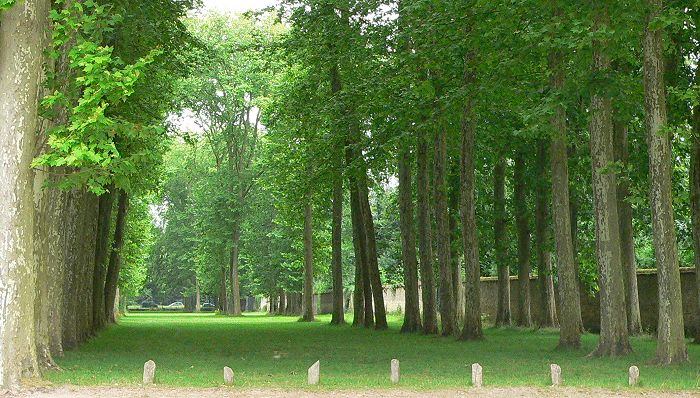
This is the Latona Fountain. (Latona was the mother of Apollo and Artemis.) It has frogs and turtles that shoot water out of their mouths. (The fountains weren’t turned on because it was a weekday – on weekends they charge admission to the grounds, and put on a big show with the fountains.)

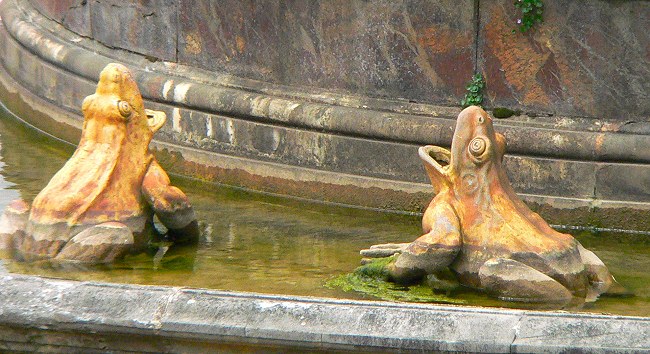
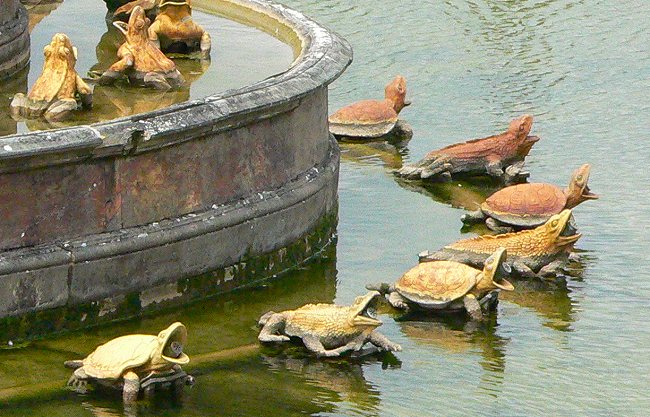
Another day we visited the Bois de Vincinnes – a huge park right outside of the ring road, southeast of the city. It reminded Mike of Central Park in New York City. It has lakes to walk around, gardens, a palace, and a bird sanctuary. This is the map they had posted in the park.

This is one of the big lakes.

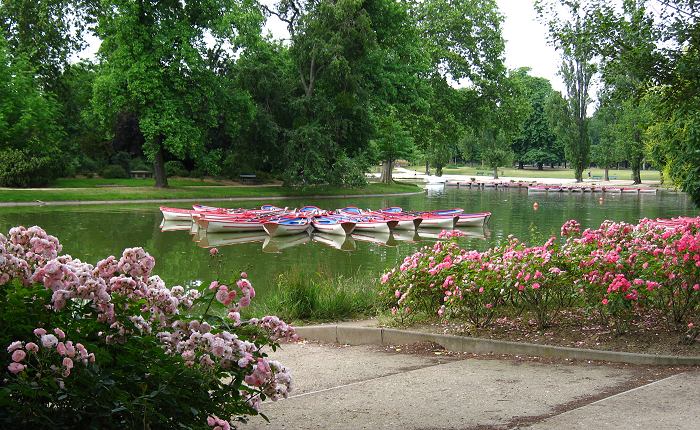
The lake has an island with a temple and a grotto.
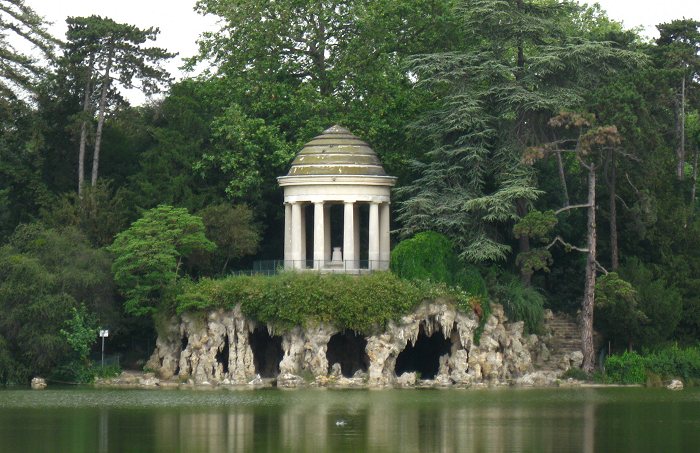
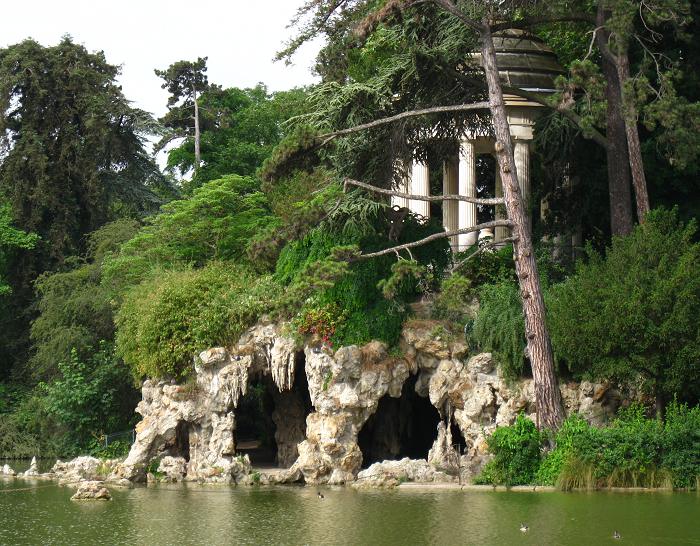

And a family of Mute Swans

We saw some hawks that looked like they had a nest in some of the trees next to the lake.
This is a wilder area, on the way to the bird sanctuary.
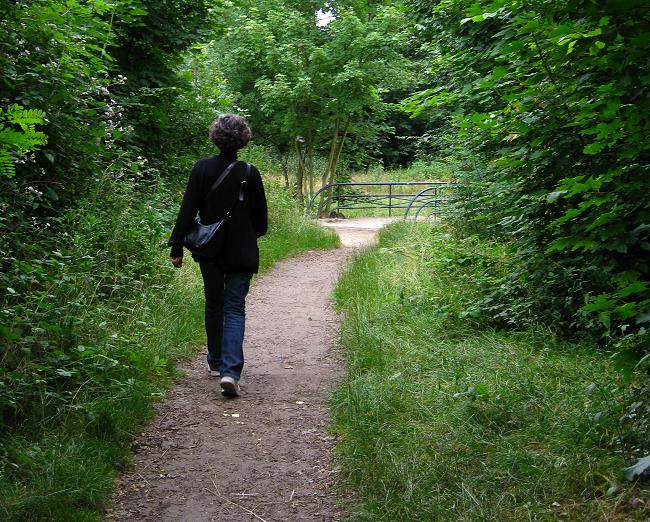
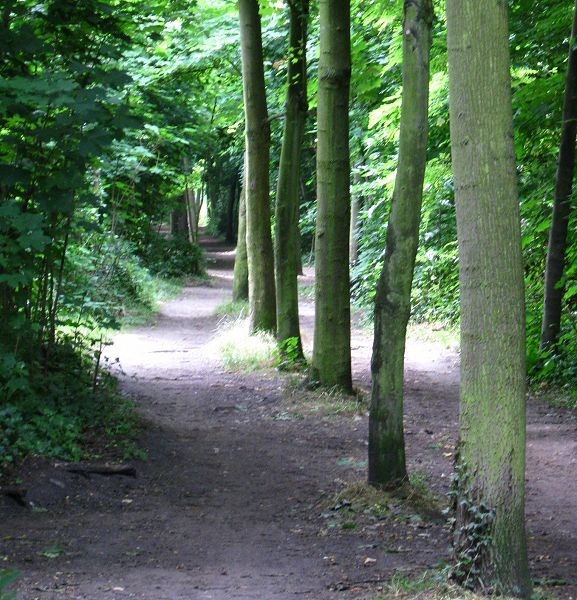
The bird sanctuary is closed to people, but there’s a bird-blind built at the edge so that people can sit and look into the sanctuary. This is the pond we could see, looking through the blind.
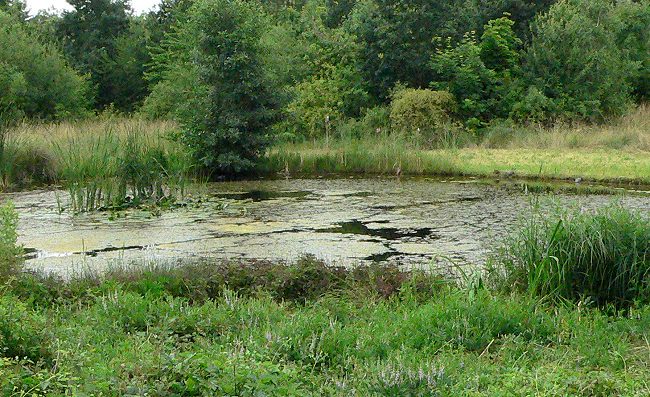
As we were sitting there, watching a few Moorhen (Gallinula chloropus) babies feeding quietly, one of the parent Moorhens suddenly shrieked and flapped down to the end of the pond. A moment later a fox appeared and started lapping water at the edge of the pond.
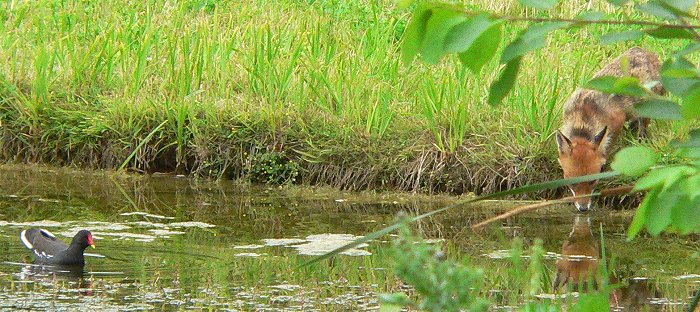
The fox stayed for about 10 minutes – drinking, stretching, and rolling in the grass.

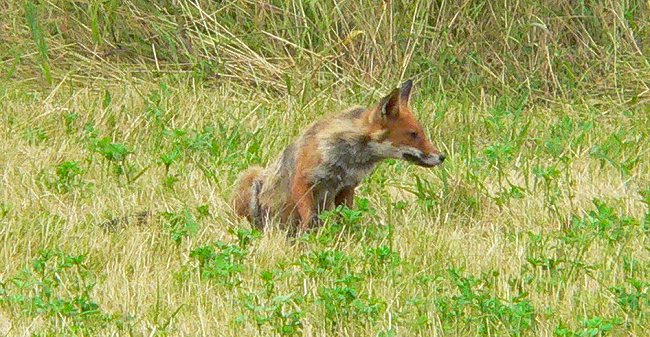
Then it wandered off, and we could hear alarm calls from other birds in that direction.
Around the outside of the bird sanctuary were some fields of grass and flowers and we saw some butterflies.
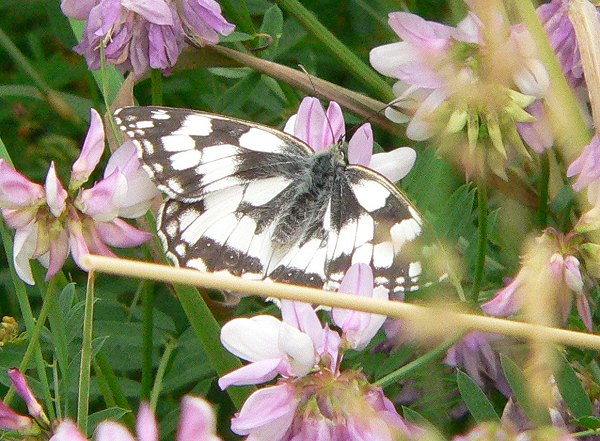
They’re called Marbled Whites (Melanargia galathea), and are a common butterfly in flowery meadows in most of Europe. Marbled Whites are in the subfamily Satyridae – so they’re related to mostly brown butterflies like Satyrs and Wood Nymphs.
Here are a few more views of the grassy meadows – I do like places that aren’t so manicured – these were nice and wild looking.

Poppies in the meadow. I think these are Corn Poppies (Papaver rhoeas). They are weedy annuals found in most of Europe and northern Africa. They have been associated with agriculture there since prehistoric times, so no one really knows where they originally grew.
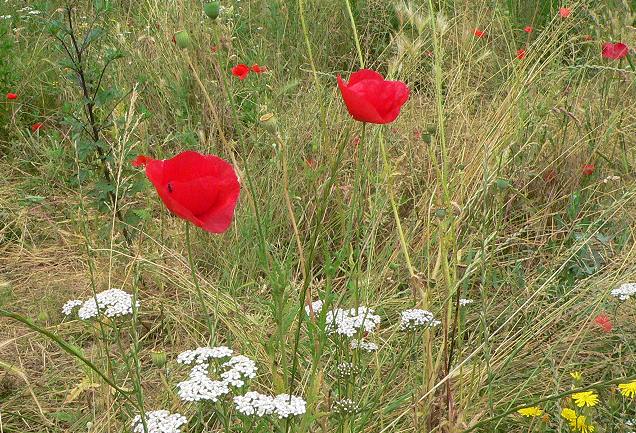

Another day we went with our friend, Michael Collins, to Fontainebleau.
The chateau is in the town of Fontainebleau, south of Paris. We took a commuter train, and enjoyed the views of the suburbs and small towns along the way.
The chateau was very crowded, so we hurried through and spent the rest of our time wandering around the grounds.
Michael Collins and me outside Fontainebleau
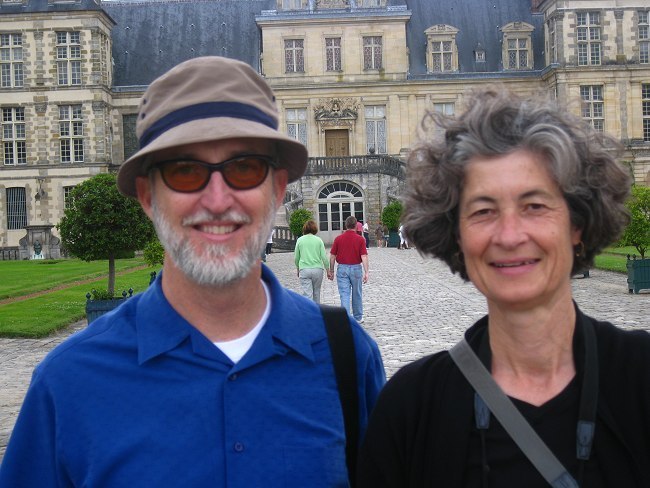
The most interesting thing – to me – inside, was the fabric on the throne and the hangings around it. It was velvet, with small insects embroidered in gold.


The insects are supposed to be bees. In 1804 Napoleon decided to change the symbol of his family from the fleur-de-lis, to a gold bee, so he had bees embroidered on his throne.
The grounds of the palace were beautiful and fun to walk through. This old painting that we saw inside the chateau – I think it was painted in the 1700s – shows what some of the formal parts of the gardens looked like then. They haven’t really changed very much.


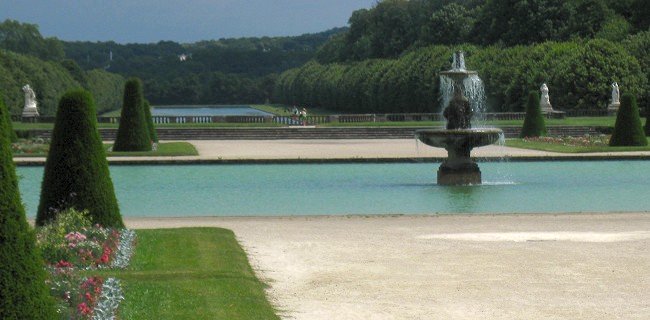
This pool had schools of fish living in it.
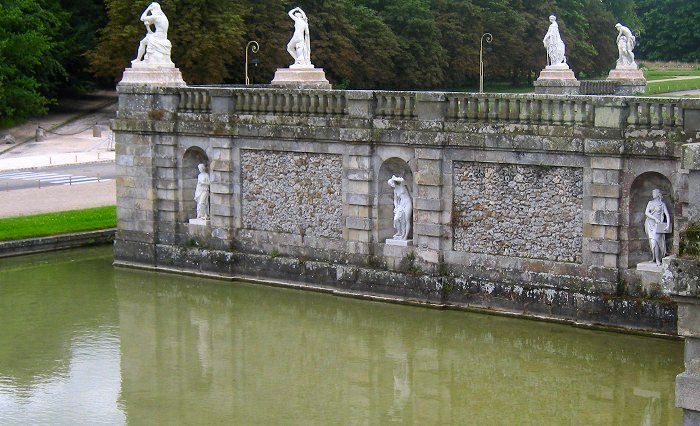
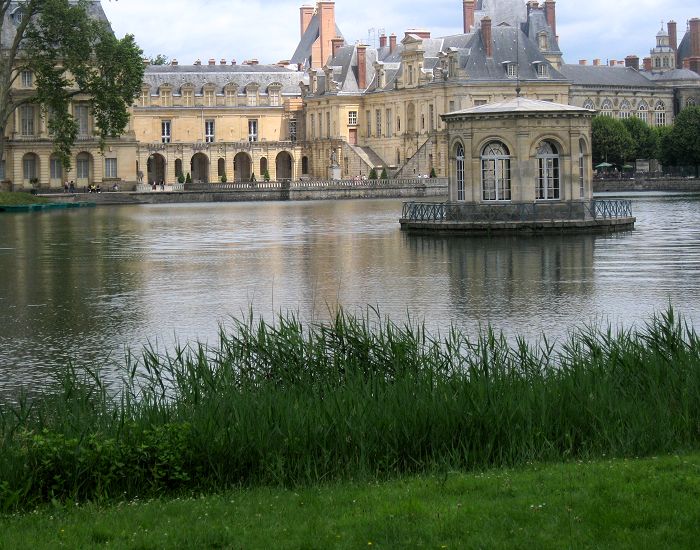

Other areas had wooded paths, grassy meadows, and little streams.

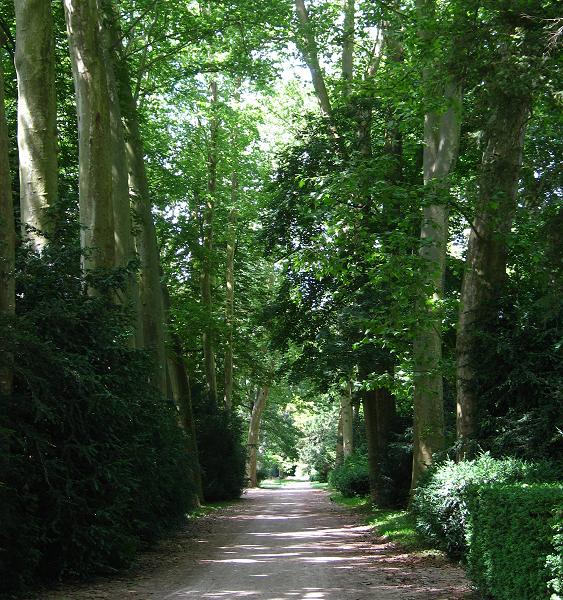
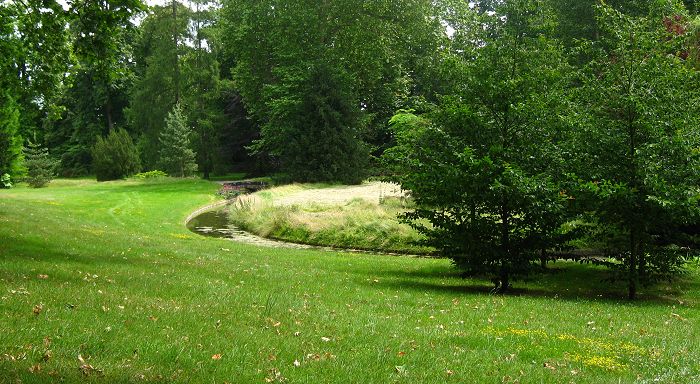
One of the meadows was full of butterflies. They were Meadow Browns (Maniola jurtina), a very common meadow butterfly found from Scandinavia to North Africa.


